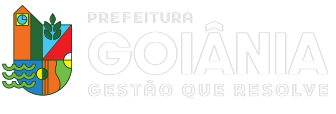Esta proposta de atividade de Língua Inglesa é destinada aos estudantes do 9º ano do Ensino Fundamental – Anos Iniciais

Imagem criada no canva.com
Fascinating Fun Facts: Discover the Extraordinary in the Ordinary
The world is full of incredible and surprising facts that can turn the most ordinary things into sources of wonder. From the animal kingdom to the human body, here are some fun facts that will leave you amazed!
1. The Heart of an Octopus: Did you know that an octopus has three hearts? Two of them pump blood to the gills, while the third pumps it to the rest of the body. This unique circulatory system helps them adapt to their underwater environment.
2. Giraffe Necks and Human Similarities: While giraffes are known for their long necks, what’s surprising is that they have the same number of neck bones as humans—just seven! Each vertebra in a giraffe’s neck is elongated, giving them that impressive height.
3. The Eternal Shelf Life of Honey: Honey is a natural marvel when it comes to longevity. It never spoils! Archaeologists have even discovered pots of honey in ancient Egyptian tombs that are over 3,000 years old—and still edible!
4. Your Brain’s Lightning Speed: The human brain is a powerhouse of efficiency. It can send messages to different parts of your body at lightning speed, allowing you to react, think, and move in an instant.
5. Walking Around the World: Over a lifetime, the average person walks the equivalent of three times around the Earth! This adds up to approximately 110,000 miles, showcasing the incredible distances our legs can carry us.
6. Blink and You’ll Miss It: We blink about 15 to 20 times per minute without even realizing it. Blinking helps keep our eyes moist and protected, and in a single day, we blink over 20,000 times!
7. The Mighty Tongue: Though it might not seem like it, the tongue is one of the strongest muscles in the human body. It’s incredibly flexible and plays a crucial role in speaking, eating, and even showing emotions.
8. Cow Friendships: Cows are social animals, and they form close bonds with other cows. They even have best friends and can experience stress when separated from them. This fact adds a new layer of understanding to these gentle creatures.
These fun facts remind us that the world is full of surprises and wonders. Whether it’s the amazing adaptations of animals or the hidden strengths of our own bodies, there’s always something new and fascinating to learn!
Glossary:
Octopus – Polvo
Hearts – Corações
Circulatory – Circulatório
Environment – Ambiente
Giraffe – Girafa
Bones – Ossos
Elongated – Alongado
Longevity – Longevidade
Archaeologists – Arqueólogos
Edible – Comestível
Brain – Cérebro
Messages – Mensagens
Lifetime – Vida (ou “vida útil”)
Distance – Distância
Social – Social
Leia o texto abaixo e responda as questões sobre o mesmo:
The Eternal Shelf Life of Honey: Honey is a natural marvel when it comes to longevity. It never spoils! Archaeologists have even discovered pots of honey in ancient Egyptian tombs that are over 3,000 years old—and still edible!
QUESTION 01
De acordo com o texto, os potes de mel encontrados em tumbas egípcias tinham
(A) menos de 500 anos.
(B) entre 1.000 e 1.500 anos.
(C) exatamente 2.000 anos.
(D) mais de 3.000 anos.
QUESTION 02
Faça uma pesquisa sobre a informação contida no texto e responda se é realmente um fato ou apenas uma opinião de alguém.
QUESTION 03
Pesquise mais fun facts e escreva, em inglês, um que você achar interessante.
QUESTION 04
A afirmação sobre curiosidades verdadeira é a de que
(A) the human brain can send messages to different parts of the body at a speed of 100 km/h.
(B) giraffes have the same number of neck bones as humans: 5.
(C) cows have best friends and can become stressed when separated from them.
(D) an octopus has only two hearts that pump blood throughout its body.
| Autoria | Profª Drª Sueidy Lourencio |
| Formação | Letras: Português/Inglês – Doutorado em Educação |
| Componente Curricular | Língua Inglesa |
| Habilidades | (EF09LI08) Explorar ambientes virtuais de informação e socialização, analisando a qualidade e a validade das informações veiculadas para despertar a autonomia leitora. |
| Referências | MAKAR, Barbara W. Primary Phonics. 1. ed. Chicago: Modern Curriculum Press, 2018. KOUSTAFF, Lesley. Oxford Discover. 2. ed. v. 1. Oxford: Oxford University Press, 2018. FOLEY, Mike; HALL, Diane. New Total English Elementary student’s book, Essex: Pearson. Education Limited, 2011. |

